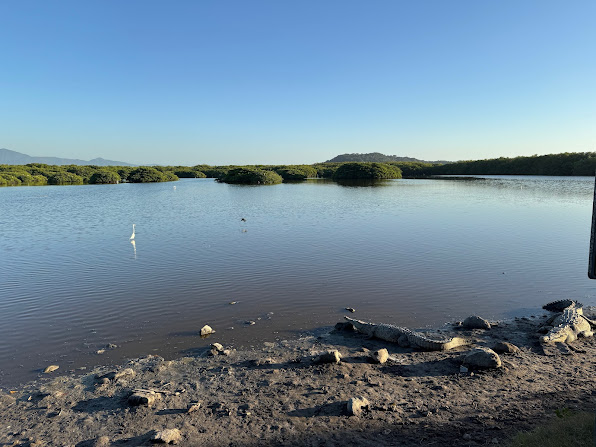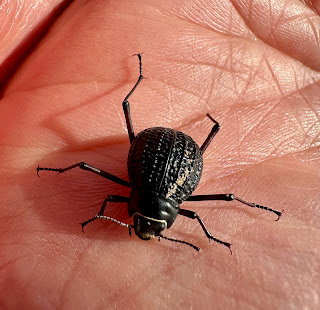It is 1959. The two of us starting ‘A’ level Zoology that year really thought we had had started playing with the big boys. Instead of the elementary textbooks used for ‘A’ level Biology we had access to the very few more advanced book kept in a glass-fronted cupboard in the biology library. One of the books was Essentials of Histology by Sir Edward Sharpey-Schafer. I cannot remember which edition it was which is not surprising when, after the first in 1885, it had reached 14 by 1938 and, finally, 16 by 1954, nearly 20 years after the death of the original author. Sharpey-Schafer was for decades the histology text in British universities. Thus It came as something as a shock on reaching university that the recommended textbook was not Sharpey-Schafer but Histology for Medical Students by Evelyn E. Hewer which was, in October 1962, in its 7th edition and shortly to reach its 8th. That shock was amplified by finding the histology course was held on Saturday mornings.
 |
An illustration from Sharpey-Schafer (5th Edition, 1898)
It is interesting to note that although the myopithelial cells had already been described by German
histologists, later shown to be responsible for milk ejection, Schafer made no mention of them |
 |
| From Hills Biographical Memoir of Sharpey-Schafer |
 |
The American 5th Edition available
online at Internet Archive |
Microscopy with its attendant techniques for histology and cytology involving reagents and equipment with exotic-sounding and esoteric names were central to zoology as well as to the medical sciences. Few labs were without the equipment necessary to produce microscope slides of whatever organism, organ, tissue or cell was being studied. Mammalian histology for medical and medical science students was though taught then and somewhat anomalously by physiology departments, following the precepts of Sharpey-Schafer himself who was a physiologist.
Schafer held strongly to the view that histology should be part of physiological teaching and deplored the modern tendency to relegate it to the anatomist. Up to Sharpey’s time Anatomy had been considered to be the foundation of medicine and surgery; the young Schafer pointed out that this was only justifiable if the object of medical education were to provide physicians, not for the living, but for the dead, and in 1885 he published Essentials of Histology, a book aimed at supplying students with data necessary for understanding physiological functions.
Jumping to ten years or so later, the coffee room conversation had turned to some point of histology that needed to be looked up. Heading for the door into the corridor, JLL, in his usual stentorian voice said, ‘I’ll get my copy of Schafer’. That announcement was met by a boom and a plume of cigar smoke from the cell-like office across the corridor. Its occupant, Amo, shouted, ‘You’ll be perpetuating a mischief if you do!’ Amo then appeared through the fug to extol the virtues of Hewer over Sharpey-Schafer. I went off to get my copy but neither volume provided the information we were looking for.
I was reminded of this rivalry between two textbooks when writing about William Rowan and the control of reproduction and migration by daylength, since it is Sharpey-Schafer who came up with the idea in the early years of the 20th century. The insight also reveals the breadth of Schafer’s knowledge, interest and leadership far beyond the narrow approach that became manifest in the physiology departments of some medical schools. Preceding generations also simply referred to Sir Edward Sharpey-Schafer as Schafer because that was his original name. He was born Edward Albert Schäfer in London, the son of German immigrant who became naturalized and a British mother. As a medical student at University College London Schafer was greatly influenced by William Sharpey (1802-1880) who was professor of anatomy and physiology. Later, Schafer became the first Sharpey Scholar in 1873. Both of Schafer’s sons were killed in the First World War, one had as one of his names, Sharpey. In order to commemorate Sharpey and his sons, Schafer took the surname Sharpey-Schafer in 1918.
The later editions of Essentials of Histology were revised mainly by Harry Montgomerie Carleton (1896-1956) who taught histology and histological techniques at Oxford—in the Sharpey-Schafer tradition in the physiology department.
 |
A battered copy of the last edition
revised by Evelyn Hewer |
Compared with 1885, Hewer’s
Histology for Medical Students was the newcomer to the textbook market. with the first edition appearing in 1937. The final (9th edition) was published in 1969 but Hewer dropped out of the further revisions after the 5th when she retired. Evelyn Everard Hewer (1889-1975) was Reader in Histology in the University of London and first Demonstrator, then Assistant Lecturer and then Lecturer in Physiology at the Royal Free Hospital Medical School in London. She was born in north London on 4 June 1889, the daughter of Joseph Langton Hewer, a general practitioner with an MD degree, and his wife, Annie Martha, a writer (
Our Baby: For Mothers and Nurses,
Antiseptics: a Handbook for Nurses, and reviewer). She educated at the North London Collegiate School for Girls and entered Bedford College for Women in 1908. She listed the subjects of her first degree: Maths, Chemistry and Zoology, and graduated in 2010. The honours course was another year and she graduated with first-class honours in physiology in 1911. In 1909 she had been listed as a medical student at Bedford College but clearly went down the science rather than the medical degree route. She was then awarded a University Studentship for research (£50 for the year) and obtained an MSc, the highest degree available at the time, in 1916. In the days before the PhD she was awarded the higher doctorate (probably on the basis of publications and, possibly in London University, a thesis) in science in 1922.
By the time of the 1921 census Evelyn Hewer was lecturing in the physiology department of the Royal Free Hospital School of Medicine for Women; there she stayed for the rest of her career, at some stage being appointed Lecturer and then Reader in Histology by the University of London. It was then possible to be a Reader in the university but a Lecturer in a constituent college. The various censuses and electoral registers from the early decades of the last century show her living with her parents in Highbury, London (1911), St Albans (1921), Finchley Road, London (1929) and Lyndale Avenue, London (1930, 1934). However, in 1919 she was living on her own in a flat in Hammersmith.
Her only appearance in the newspapers to which I have access concerned her research studentship and an accident in July 1915 (Western Times 29 July) in which the car she was driving with her sister as passenger collided with another in South Molton, Devon. A virtually identical collision had occurred at the same spot as another four days earlier. Both front wheels ‘were broken clean off’. ‘There were other injuries of a minor character’.
Evelyn Hewer published on a variety of topics, generally concerned with human early embryonic development and the physiological events of pregnancy. She was also co-author of a book on the nervous system in 1929. One of her papers (with Mary Frances Lucas Keene (1885 –1977), professor of anatomy at the Royal Free and the first female professor of anatomy in the UK), was a classic and of particular interest to me. They were the first to describe the separate origins of the human fetal adrenocortical tissue and the adrenal cortex of the adult.
Evelyn Hewer died on 2 December 1975. Her address was given as 3 Hamp Green Rise, Bridgwater, Somerset; she was 86.
Both textbooks must have very profitable for their publishers. I suspect that both were run on beyond their sell-by-dates, for 69 and 32 years. Revising textbooks is an increasingly difficult job with the passage of time and the point comes when a fresh approach is needed. I cannot remember why Amo thought Sharpey-Schafer’s book, at least in its later editions, was ‘perpetuating a mischief’.
Hill, LE. 1935. Sir Edward Albert Sharpey-Schafer, 1850-1935. Biographical Memoirs of Fellows of the Royal Society 1, 401-407 doi: 10.1098/rsbm.1935.0005
Lucas Keene MFL, Hewer, EE. 1927. Observations on the development of the human suprarenal gland. Journal of Anatomy 61, 302-324












.jpeg)












